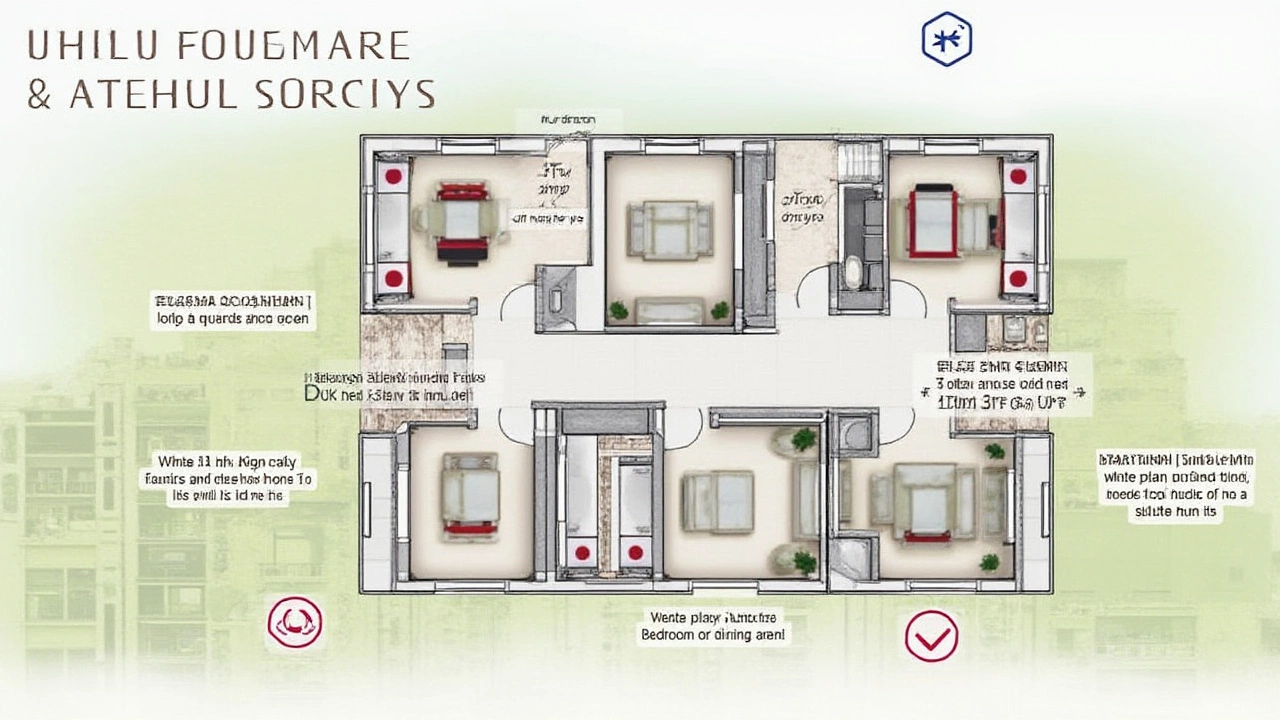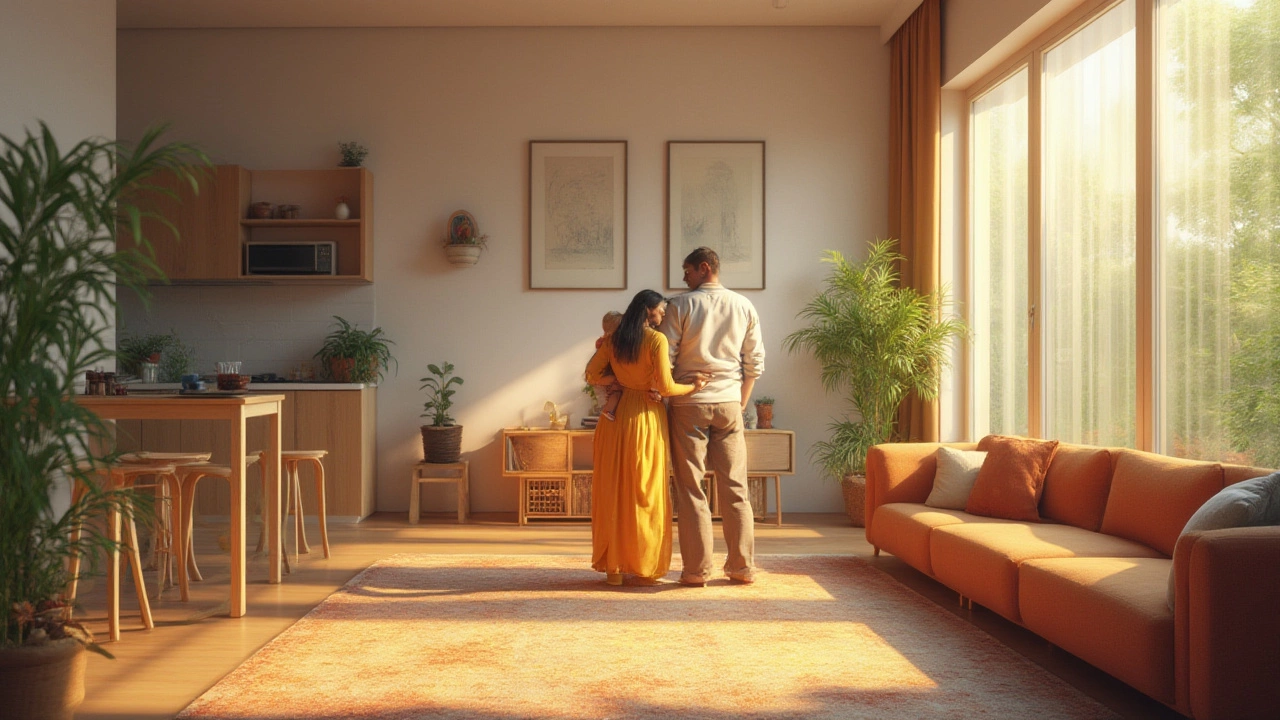If you’ve looked into buying or renting in India’s urban centers, you’ve probably come across the term “3i flat” on listings. It crops up in property ads, makes an appearance in housing society WhatsApp groups, and sometimes leaves home shoppers scratching their heads. It’s not an official real estate category, but it’s become real enough in cities where space is precious, and property hunters love a good acronym.
Breaking Down 3i Flats: What Does “3i” Actually Mean?
The “3i” in 3i flat can sound cryptic at first, but let’s pull it apart. That “3” is the star of the show—it stands for three bedrooms. The “i” indicates “independent,” as in a self-contained unit that comes with its own kitchen and at least two bathrooms, though sometimes you’ll also see it meaning “individual” or “integrated.” Where the definitions wobble a bit is due to different developers and regions adopting slightly varied interpretations. But the widespread understanding, almost anywhere you search, is that a 3i flat is a three-bedroom apartment with an independent floor plan, usually targeted at families who want more than just cookie-cutter spaces.
Unlike BHK (Bedroom, Hall, Kitchen) definitions, “3i” doesn’t officially specify a number of halls or utility rooms. Still, most 3i flats feature a generous living space, and you’ll rarely find one without a separate kitchen and multiple baths. In Delhi NCR and Mumbai, the “i” is a sign you can expect your own entrance, no shared bathrooms in the hallway, and practical touches meant for nuclear or multigenerational families.
This independent touch can mean more privacy—useful for those with older parents, guests, or household staff. In fact, you’ll find that 3i flats mushroomed across the country as builders responded to homebuyers wanting to break out of cramped two-bedroom routines. Some floor plans even carve out room for a small study or prayer space, again adding individuality to the layout.
You might wonder: is a 3i flat the same as a 3BHK? Not exactly, though the overlap can make buyer’s eyes glaze over. Most 3BHKs don’t guarantee that coveted “independent” feel. You could have a common corridor, fewer bathrooms, or a shared entrance. The 3i label aims to reassure families that their home layout isn’t just three rooms smashed together; it’s a space planned for privacy and comfort. And while there’s some healthy real estate marketing spin around these names, most buyers today treat “3i” as a shorthand for flexibility and ease in apartment living.
If you see a flat labelled “3i,” expect slightly higher square footage compared to ordinary three-bedroom spaces in the same building. In Bangalore, for instance, 3i flats average between 1,200 and 1,800 square feet, while typical 3BHK units sometimes squeeze into under 1,000. This translates into a more liveable layout—no more bumping elbows in the kitchen, and fewer morning queues outside the bathroom door.
It’s no accident that the 3i flat gained traction after 2010, when urban working couples (with or without kids) started demanding a little more home for their buck. Developers seized the moment, branding their “independent” floors as 3i, especially in expanding suburbs or gated communities.
One thing worth knowing: the terminology isn’t government-regulated, so exact features may depend on local trends, the building’s age, or the sales pitch. Smart buyers always request a walkthrough or a floor plan before sealing the deal—ads can be fuzzy with details, and nothing beats seeing that “independence” for yourself.

Features and Benefits: Why Buyers and Renters Choose 3i Flats
So why go for a 3i flat, rather than a standard 3BHK or another layout? It really comes down to practicality, comfort, and changing family needs. Let’s unpack the main draws that explain their popularity.
First, privacy tops the list. Since a 3i flat often sports an independent entrance or a privately accessible foyer, it’s a game-changer for families who value boundaries. In sprawling metro cities, where joint family living is common, these layouts allow relatives to share walls but maintain life at their own pace. If a grown child or grandparent wants some breathing space, or someone works from home and needs a buffer from hallway chatter, a 3i delivers on that front.
Then there’s the question of bathrooms—many 3i flats boast three or even four (one for each bedroom, plus a guest washroom). Compared to old-school apartment layouts with a single shared bath for three or more bedrooms, this can feel like a luxury. The daily “who gets the shower first?” argument becomes yesterday’s problem.
Independence carries over into utility spaces too. Most 3i flats include a dedicated kitchen, sometimes with a pantry or servant room, and almost always offer a separate balcony attached to one or more bedrooms. Some newer units even slip in little extras, like a laundry corner, a work-from-home alcove, or reserved parking within shouting distance of your door. It’s easy to see why these features appeal to upwardly mobile professionals juggling career demands and their parents’ comfort.
Three-bedroom layouts with extra independence sells for more than regular 3BHKs—about 10–20% more in most metro areas. But there’s a certain peace of mind in those extra square feet and the smart division of the home. Families with live-in help swear by 3i flats too, since a “staff” room or bathroom can be walled off from main living quarters. As kids outgrow shared rooms, the value of three distinct bedrooms—and everyone having a spot for their stuff—can’t be overstated.
The flexibility shows up in resale value. Even as the property market shifts, spacious 3i flats retain interest, outpacing single-bedroom units and smaller 2BHKs. For buyers worried about investing in homes that grow stale with changing tastes, the 3i delivers adaptability: hosted guests, turned the study into a nursery, or even built an in-home gym. It adjusts right along with you.
On the renter’s side, 3i flats have gained popularity among expats, shared-living groups, and corporate tenants. Their versatility means you’ll never stare at a wasted guest bedroom collecting dust. And yes, if you’ve got side hustles—art, music, remote work—you can transform that “extra” independent space into a workshop or chill zone.
Another hidden benefit is the way a 3i flat handles noise and movement. Because the layout puts bedrooms farther from the living area, parents can put kids to bed, then push on with work or a Netflix marathon in peace. You won’t find quite this isolation in compact flats, even in newer towers all around the Melbourne CBD or Gurgaon’s cyber hub.
It isn’t just about bells and whistles, either. In many Indian metro suburbs like Pune, Hyderabad, and Chennai, 3i flats have become the go-to unit in mid-range and premium societies, from DLF to Lodha to Prestige Group. With project developers sweetening the pot by adding everything from power backups to yoga decks, 3i buyers hardly ever feel shortchanged on amenities.
What do you lose? Higher cost, sure, and sometimes more cleaning surface. But for most families plotting a decade or more in their next home, the upsides—space, privacy, long-run comfort—win out.

Tips for Choosing the Right 3i Flat: What Smart Buyers Need to Check
So you’re convinced that a 3i flat is the way to go, but figuring out which one is best can be trickier—especially with how loosely some sellers toss the term around. Here’s what I tell friends and clients whenever the property hunt starts.
Start by going beyond the listing. Always ask for the exact floor plan and walk through the flat if possible. Some “3i” labels turn out to be wishful thinking: maybe there’s only one bathroom, or the supposed independent entrance just means a door next to a busy lift. It never hurts to ask the agent or owner, “What exactly makes this flat a 3i?” Insist on specifics.
Check how independent the space really feels. In many towers, all three-bedroom units share a communal corridor, so privacy might not live up to expectations. Good 3i flats protect inhabitants from hallway noise and give that shield of separation from the outside world. Examine entrances and see if there are any shared elements—sometimes a “private” foyer is just three feet of tiled space with no door.
Square footage matters, but so does layout. Some older apartments sprawl over 1,500 feet but make poor use of the space. Modern 3i flats feel roomy because of thoughtful planning—so make sure the bedrooms aren’t squeezed to fit a bigger living room, or the third bedroom isn’t just a converted store room. Trust your instincts, but measure everything yourself if you can. Bring a tape measure or use phone apps that let you estimate room size because “spacious” in real estate speak can mean anything.
Bathrooms and utility areas deserve a closer look. Ideally, each bedroom should have its own bath, with a separate powder room for guests. This isn’t negotiable for bigger families, or if you plan to have regular visitors. Kitchen placement matters too. Some buyers like a closed kitchen for less smell and noise, others swear by open cooking spaces. The “i” in 3i should give you flexibility—choose your favorite style, but make sure the plumbing, ventilation, and storage work for your daily routine.
Light and ventilation make or break a flat. Even a fancy 3i layout loses its appeal if you’re stuck with dark rooms and poor air flow. Check which way the windows face, how far apart the neighbouring buildings are, and whether you get any direct sunlight. If you’re in an urban area (like right here in inner Melbourne or Mumbai), high-rises can cast shade on lower flats. Sometimes, the priciest unit gets the least daylight—it’s funny, but it happens.
Watch for hidden costs. 3i flats might include amenities like a gym, swimming pool, or security, but maintenance fees can eat into your budget. Always get a breakdown of what you’re paying for (and what you’re not). Ask about parking—does your unit come with a reserved space, or is it a free-for-all? And don’t forget to check on water supply and backup in areas facing shortages.
If you’re thinking long-term resale or rental possibilities, zero in on high-demand buildings with reliable management. Well-kept common areas, lifts, and security make a massive difference in how much your 3i flat will fetch down the track.
Location still rules the game—even the best 3i layout won’t save you from a five-kilometre trek to the nearest bus stop or metro station. Consider schools, parks, groceries, and commute routes. Sometimes a slightly smaller 3i flat in a great neighbourhood trumps the biggest flat in a less connected area.
Finally, ask your broker or building manager about recent sales of similar 3i flats in the area. This is where you start haggling and see if you’re being given the “market price” or just the “dreamer’s price.”
Ready for the secret tip? If 3i flat is your house-hunting keyword, set up automated search alerts on the major portals (like Magicbricks, 99acres, or the local groups of your city). The right units can go in days, not weeks. Move quick, move smart, and you’ll find a space that doesn’t just fit you—but grows with you. Happy hunting, and here’s hoping your next move is as independent as it gets.
